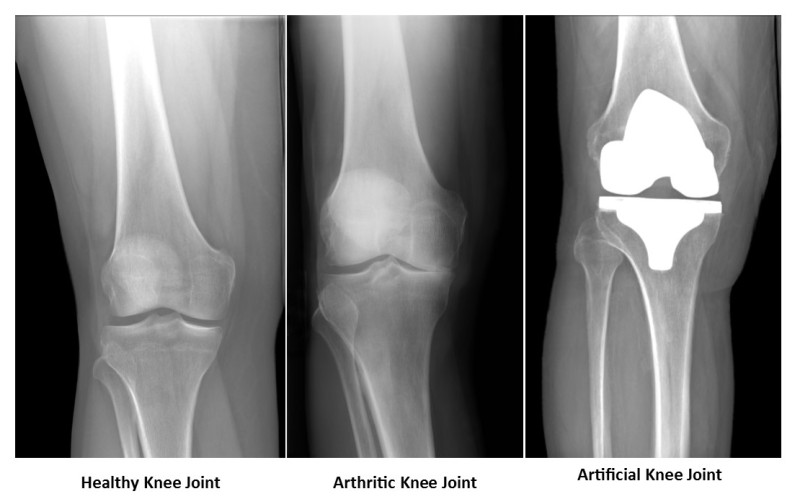Knee replacement can help relieve knee pain and enable you to live a fuller, more active life. If you and your orthopedic surgeon have decided that you are a good candidate for a full joint replacement, you are in good company. Almost one million hip and knee replacement surgeries are performed in the United States annually, making it one of the most common orthopedic procedures performed today.
The knee functions as a hinge joint. The joint is made from the end of the thigh bone (femur), where it meets the shin bone (tibia) and the knee cap (patella). Normally, the cartilage coating over the bones makes the joint move smoothly and provides an additional shock-absorbent cushion. In an arthritic knee, the cartilage surface wears out and begins rubbing bone on bone which causes pain, stiffness, and swelling of the knee joint.
In a total knee replacement surgery, the arthritic surfaces of the knee joint are removed and new surfaces are provided with metal and poly (plastic) parts. This relieves knee pain and allows the joint to move smoothly again.
